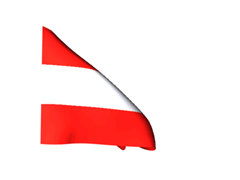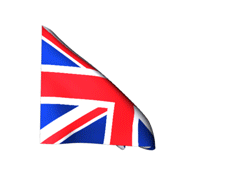Diabas


Als Diabas werden in der Literatur, je nach geographischer Herkunft, generell verschiedene basische Vulkanite (Ergussgesteine) bezeichnet, die submarin, also unter der Meeresoberfläche, gebildet wurden. Im engeren Sinn ist als Diabas ein durch geringfügige Metamorphose grünlich gefärbtes, ursprünglich basaltisches, prä-permisches, also paläozoisches Ergussgestein gemeint. Es entspricht in seiner mineralogischen Zusammensetzung einem Tholeiit-Basalt und wird in der Literatur vielfach mit Dolerit gleichgesetzt, der sich allerdings in deutschsprachiger Literatur durch Plagioklas-Einsprenglinge von Diabas im engeren Sinn unterscheidet. Diabas ist in Europa vor allem in variszischen Gesteinskomplexen zu finden, repräsentiert den untermeerischen Vulkanismus in den paläozoischen Meeresbecken und wird auf Grund seiner Färbung in älterer Literatur und auf älteren geologischen Karten auch Grünstein genannt.
Ausgangspunkt der Entstehung von Diabas (von lat. "durchdringend") sind auf dem Meeresgrund verfestigte Sedimente aus Abtragungsschutt anderer Gesteine. Durch Schwächezonen in der Erdkruste, hier wohl Vorläufer der Periadriatischen Naht, die im geologischen Sinn Europa von Afrika trennt, tritt bis zu 1200 Grad Celsius heiße, aufsteigende Lava basaltischer Zusammensetzung aus und breitet sich in den Sedimenten aus. Dabei kühlt die Gesteinsschmelze ab und bildet die ersten gesteinsbildenden Kristalle aus. Weitere Kristalle entstehen infolge der fortschreitenden Erkaltung der Lava und reagieren mitunter mit Wasser und Sedimenten. Durch Kontaktmetamorphose (teilweise Aufschmelzung der bereits vorhandenen Gesteine in Kontakt mit der heißen Lava) entstehen auch im Umfeld der Zone, in der die Lava heraufdringt, neue Gesteinsformen.
Diabase haben ein dichtes, fein- bis mittelkörniges Gefüge. In einigen Varietäten können größere Feldspat-Einsprenglinge (Plagioklase) ausgebildet sein, die dem Gestein ein porphyrisches Gefüge verleihen. Das Kalzium einiger Plagioklase kann im Zuge einer Vorstufe der Metamorphose in Kalzit überführt werden.
Oft lassen sich in Diabas Einschlüsse und Einsprenglinge finden - etwa Feldspat-Kristalle (Plagioklas) in Form von länglichen, stäbchenartigen Einsprenglingen, Pyritkristalle (Schwefelkies) in Form kleiner Kristalle bis zu Aggregationen, die durch ihre goldglänzende Farbe auffallen, oder auch Einschlüsse von Quarz, die den Diabas in länglichen Bändern (Quarzvenen) durchziehen können und weiß bis schmutzigweiß gefärbt sind. Wenn der Diabas über lange Zeit der Witterung ausgesetzt war - hier geht es um Millionen von Jahren - können die Quarzvenen auf Grund ihrer höheren Härte aus dem Grundgestein erhaben hervorstehen.
Diabas hat eine ungewöhnlich hohe Dichte, die bis zu 3000 kg/Kubikmeter betragen kann. Zudem gilt Diabas als besonders druck- und witterungsbeständig. Diese Eigenschaften von Diabas machen das Gestein vielfältig verwendbar. Bereits in der Steinzeit wurden Werkzeuge und Waffen aus Diabas gefertigt. Diabas ist ein ideales Material für Bahnschotter, Straßensplitt und Pflastersteine, ebenso ist er geeignet als Baumaterial für Fassaden und Innenraumgestaltung, nicht zuletzt als Material für Grabsteine, sodass sich der Abbau von Vorkommen in Form von Steinbrüchen lohnt. Weiters wird Diabas auch als Zuschlagstoff für Beton verwendet und kommt als Gesteinsmehl in Gärten und in der Landwirtschaft zum Einsatz.
Hier, zwischen Eisenkappel und Ebriach, wurde ein besonders hochwertiger Diabas abgebaut, der als Feinsplitt für den Straßenbau und als Bahnschotter Verwendung fand. Aus wirtschaftlichen Gründen wurde der Abbau dennoch bereits vor einigen Jahren stillgelegt.
Da das Diabasvorkommen von Ebriach im Bereich einer geologischen Störungszone, der sogenannten Periadriatischen Naht, welche die Europäische von der Afrikanischen Platte trennt, liegt, war das Gestein über die Jahrmillionen tektonischem Druck ausgesetzt, was zur Bildung von Klüften und Verwerfungen führte. Entlang der Verwerfungen wurden die Flächen durch aneinandergleitende, verschobene Gesteinspakete geglättet, teils mit Bewegungsspuren und besonders glatten, ebenen Flächen, welche in der Bergmannssprache als Harnische bezeichnet werden. Da in dem aufgelassenen Steinbruch das Gestein teils entlang dieser natürlichen Trennflächen abgebaut wurde, sind solche Flächen auch aus einiger Entfernung deutlich zu erkennen.
Das Betreten des aufgelassenen Steinbruchs ist verboten und für die Beantwortung der Fragen des Earthcaches auch nicht notwendig! Man kann direkt bei den Earthcache-Koordinaten parken und die Fragen unmittelbar vor Ort beantworten.

Depending on their geographical origin, various basic vulcanic rocks (effusive rocks) that were formed submarine, i. e. under the sea surface, are generally referred to as diabase in the literature. In the narrower sense, diabase means a pre-permian, paleozoic effusive rock, originally basaltic, coloured greenly by slight metamorphosis. In its mineralogical composition, it corresponds to a tholeiite basalt and is often equated with dolerite in the literature, which, however, differs from diabase in the narrower sense in German literature by plagioclase sprinklings. Diabase is found in Europe mainly in Variscan rock complexes, represents submarine volcanism in the Paleozoic sea basins and is also called greenstone because of its colour in older literature and on older geological maps.
The starting point for the formation of diabase (which got its name from the Latin word for "penetrating") are sediments solidified on the seabed from the erosion debris of other rocks. Through weak zones in the earth's crust, here probably precursors of the Periadriatic Seam, which separates Europe from Africa in the geological sense, hot, ascending lava of basaltic composition with a temperature up to 1200 degrees Celsius spreads out and spreads in the sediments. The molten rock cools down and forms the first rockforming crystals. Further crystals are formed as a result of the progressive cooling of the lava and sometimes react with water and sediments. Through contact metamorphosis (partial melting of the already existing rocks in contact with the hot lava), new rocks forms are also formed in the vicinity of the zone in which the lava penetrates.
Diabases have a dense, fine to medium grain structure. In some varieties, larger feldspar (plagioclase) sprinklings can be formed, which lend the rock a porphyric structure. The calcium of some plagioclases can be converted into calcite during a preliminary stage of metamorphosis.
Often, inclusions can be found in diabase - such as feldspar (plagioclase) crystals in the form of elongated, rod-like inclusions, pyrite crystals (pyrite gravel) in the form of small crystals up to aggregations, which stand out due to their shiny gold colour, or also inclusions of quartz, which can pass through the diabase in elongated bands (quartz veins) and are coloured white to pale white. If the diabase has been exposed to weathering for a long time - millions of years - the quartz veins can protrude from the bedrock due to their higher hardness.
Diabase has an unusually high density, which can be up to 3000 kg per cubic meter. Diabase is also considered to be particularly pressure and weather resistant. These properties of diabase make the rock very versatile. Already in the Stone Age tools and weapons were made from diabase. Diabase is an ideal material for railway ballast, road chippings and paving stones, as well as being suitable as a building material for facades and interior design, not least as a material for gravestones, making quarrying worthwhile. Diabase is also used as an aggregate for concrete and as rock powder in gardens and agriculture.
Here, between Eisenkappel and Ebriach, a particularly high-quality diabase was mined, which was used as fine chippings for road construction and as railway ballast. For economic reasons, however, the mine was closed down several years ago.
Since the diabase occurence of Ebriach lies in the area of a geological fault zone, the so-called Periadriatic Seam, which separates the European from the African plate, the rock was exposed to tectonic pressure over millions of years, which led to the formation of fissures and faults. Along the faults, the surfaces were smoothed by moving rock packages, partly with traces of movement and particularly smooth, flat surfaces, which are called slickenside surfaces in the miner's language. Since in the abandoned quarry the rock was partly mined along these natural dividing surfaces, such surfaces are clearly visible even from some distance.
Entering the abandoned quarry is forbidden and not necessary to answer the earthcaches questions! You can park directly at the earthcache coordinates and answer the questions directly on site.
Deine Aufgaben zum Loggen dieses Earthcache / Your task to log this Earthcache:
Schicke mir die Antworten auf folgende Fragen per Message über mein Profil:
Send me your answers on the following questions via message:
1.) Betrachte ein Stück Diabas genauer (Lesesteine liegen an den Koordinaten genügend herum) und beschreibe mit eigenen Worten die Farbe, Struktur und Oberfläche des Gesteins!
Take a closer look at a piece of diabase (enough reading stones can be found around the coordinates) and describe in your own words the colour, structure and surface of the stone!
2.) Schau dich um, betrachte sowohl die Felswand bei den Koordinaten als auch die Lesesteine - welche Einschlüsse im Diabas kannst du erkennen? Beschreibe sie kurz mit eigenen Worten!
Look around, look at both the rock face at the coordinates and the reading stones - which inclusions can you see in the diabase? Describe them briefly in your own words!
3.) Betrachte vom Standpunkt des Earthcaches aus die hohe Südwand des ehemaligen Steinbruchs (ein Betreten des Steinbruchs ist nicht notwendig!). Beschreibe die Wand, was ist besonders auffällig? Was glaubst du, wie das entstanden ist?
From the earthcache point of view (it is not necessary to enter the quarry!), look at the high southern rock face of the former quarry. Describe the rock face, what is particularly striking? How do you think this came about?
4.) Optional: Gerne kannst du ein Foto von dir und/oder deinem GPS vor Ort dem Log hinzufügen!
Optional: If you like you can add a picture of you and/or your GPS unit at the location to your log entry!
Du brauchst nicht auf eine Logfreigabe zu warten! Sobald die Antworten abgeschickt sind, kannst du loggen! Ich melde mich bei dir, falls irgendetwas nicht passt.
There is no need to wait for a log permission! You can log immediately after you sent me your answers! If there's something wrong, I'll contact you.
Viel Freude beim Erkunden der Location! Have fun and enjoy the location!
Quellen / Sources:
Exner, C. (1971): Geologie der Karawankenplutone östlich Eisenkappel, Kärnten. In: Mitteilungen der Geologischen Gesellschaft in Wien (64), 1 - 106.
Geologische Bundesanstalt (Hrsg.) (1980): Der geologische Aufbau Österreichs. Wien (Springer)
www.bad-eisenkappel.info
www.geopark-karawanken.at
www.mineralienatlas.de
www.steine-und-minerale.de
wikipedia.org
Die Fotos stammen vom Verfasser / The pictures were taken by the author.
 The most exciting way to learn about the Earth and its processes is to get into the outdoors and experience it first-hand. Visiting an Earthcache is a great outdoor activity the whole family can enjoy. An Earthcache is a special place that people can visit to learn about a unique geoscience feature or aspect of our Earth. Earthcaches include a set of educational notes and the details about where to find the location (latitude and longitude). Visitors to Earthcaches can see how our planet has been shaped by geological processes, how we manage the resources and how scientists gather evidence to learn about the Earth. To find out more click HERE.
The most exciting way to learn about the Earth and its processes is to get into the outdoors and experience it first-hand. Visiting an Earthcache is a great outdoor activity the whole family can enjoy. An Earthcache is a special place that people can visit to learn about a unique geoscience feature or aspect of our Earth. Earthcaches include a set of educational notes and the details about where to find the location (latitude and longitude). Visitors to Earthcaches can see how our planet has been shaped by geological processes, how we manage the resources and how scientists gather evidence to learn about the Earth. To find out more click HERE.